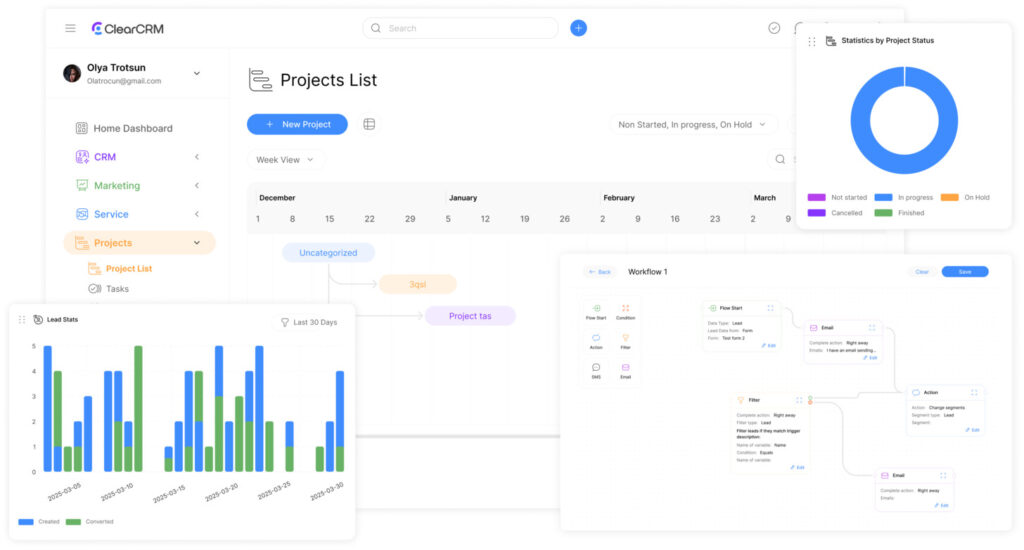Project Template:Store Launch Planning Template

Interestingly, businesses that wing their grand openings face a 72% higher risk of overspending budgets, according to retail industry analysts. Meanwhile, structured frameworks can slash preparation time by 60% while boosting team alignment. Ultimately, this stark contrast reveals why strategic project design separates thriving launches from chaotic ones.
Additionally, modern solutions bridge ambition with execution. Specifically, customizable templates distill decades of management expertise into actionable checklists. Importantly, they map critical phases like vendor coordination and inventory staging while preserving flexibility for unique business needs.
Furthermore, digital platforms transform these frameworks into collaborative hubs. Simultaneously, real-time updates keep departments synchronized, eliminating costly miscommunications. Consequently, teams track milestones against deadlines, ensuring nothing slips through cracks as opening day approaches.
Notably, four pillars anchor every successful rollout: scope clarity, schedule precision, role definition, and communication protocols. When combined with automated progress tracking, these elements create launch blueprints that adapt without crumbling under pressure.
Key Takeaways
- Pre-built frameworks cut preparation time by over half compared to manual methods
- Digital integration enables cross-department coordination through shared dashboards
- Clear ownership assignments prevent task duplication and accountability gaps
- Budget overruns drop 41% when using milestone-based financial tracking
- Scenario planning modules help teams anticipate and mitigate common launch risks
Overview of the Store Launch Planning Template
Effective frameworks transform chaotic preparations into streamlined operations. Modern systems combine structured guidance with adaptive features, addressing both immediate needs and long-term objectives. Platforms like Notion demonstrate this through customizable databases that evolve alongside shifting priorities.
Core Advantages of Structured Systems
Pre-built frameworks slash setup time by organizing critical phases from concept development to post-opening analysis. Three key benefits emerge:
- Error reduction: Standardized checklists minimize oversights in permits, vendor contracts, and inventory management
- Decision acceleration: Visual timelines help teams prioritize high-impact activities over low-value busywork
- Accountability mapping: Clear ownership fields prevent task duplication across departments
Streamlining Complex Workflows
Interestingly, digital solutions turn intricate processes into manageable steps. Additionally, automated triggers advance tasks when dependencies resolve, while integrated dashboards display real-time progress across locations. Notably, this approach particularly benefits hybrid models needing simultaneous physical and digital preparations.
Furthermore, flexible architectures allow customization without rebuilding from scratch. Specifically, teams can adapt sections for local regulations or unique customer experiences while maintaining core compliance standards. Importantly, centralized communication channels keep all stakeholders aligned as deadlines approach.
Defining Project Scope and Timeline

Crucially, clear boundaries separate successful initiatives from chaotic endeavors. Moreover, precise scope definition acts as a compass, guiding teams through complex preparations while filtering out distractions. Ultimately, this foundational step determines what stays in focus and what waits for later phases.
Milestones That Drive Momentum
Specifically, project scope documentation prevents mission creep by specifying deliverables, quality benchmarks, and approval processes. Consequently, teams gain alignment through concrete parameters rather than vague aspirations. Interestingly, one retail analyst notes:
“Timeline visualization tools expose scheduling conflicts 83% faster than manual tracking methods.”
Effective schedules balance urgency with reality. They account for supplier lead times, staff capacity limits, and seasonal market fluctuations. Breaking efforts into phases creates natural review points. These checkpoints let teams recalibrate before minor delays snowball.
Three principles ensure timelines remain actionable:
- Dependency mapping to sequence tasks logically
- Buffer periods for unexpected obstacles
- Progress metrics tied to business outcomes
Digital dashboards transform abstract plans into visual roadmaps. Color-coded status updates help project managers spot bottlenecks early. When changes occur, teams adjust deadlines without derailing core objectives.
Using the Store Launch Planning Template Effectively
Successful ventures begin when vision meets actionable steps. Structured systems bridge this gap by converting strategic objectives into tactical workflows. Platforms like Notion demonstrate this through adaptable frameworks that maintain core principles while accommodating diverse operational needs.
Connecting Vision to Action
Goal-task alignment transforms aspirations into measurable results. Each activity directly ties to business outcomes through three mechanisms:
| Task Type | Strategic Impact | Success Metric |
|---|---|---|
| Vendor Coordination | Ensures product availability | 98% inventory readiness |
| Marketing Alignment | Drives customer acquisition | 15% pre-opening signups |
| Staff Training | Enhances service quality | 85% audit compliance |
“Frameworks that link daily tasks to KPIs reduce wasted effort by 63% compared to generic checklists,”
reports a retail operations analyst. Clear ownership fields and dependency mapping prevent teams from pursuing disconnected activities.
Adapting to Unique Needs
Effective systems balance standardization with flexibility. Teams can:
- Integrate existing vendor partnerships into workflow stages
- Adjust approval processes for regional compliance requirements
- Modify task sequences for hybrid physical-digital rollouts
This adaptability ensures companies preserve their competitive edge while leveraging proven methodologies. Configuration workshops help teams tailor frameworks to reflect brand values and resource realities without sacrificing efficiency.
Integrating Tools for Project Management Success

In 2024, 89% of high-performing teams attribute success to unified digital ecosystems. Disconnected systems create workflow bottlenecks that drain resources and delay outcomes. Integrated platforms solve this by merging critical functions – task coordination, document sharing, and progress tracking – into cohesive environments.
Leveraging Notion’s Custom Workflows
Notion transforms static templates into living systems through adaptable databases. Teams build tailored interfaces that mirror their operational rhythms. One tech analyst observes:
“Companies using linked databases report 37% faster decision cycles compared to spreadsheet-dependent teams.”
Key advantages include:
- Drag-and-drop workflow builders that automate status updates
- Cross-referenced data fields ensuring consistency across departments
- Custom views adapting to user roles – executives see dashboards, managers track dependencies
Enhancing Collaboration with Asana and Other Apps
Asana’s strength lies in synchronizing dispersed teams. Its integration with communication tools creates real-time alignment:
| Feature | Impact | Outcome |
|---|---|---|
| Portfolio Views | Shows inter-project dependencies | 23% fewer scheduling conflicts |
| Automated Rules | Triggers next steps when tasks complete | 41% faster phase transitions |
| Proofing Tool | Centralizes feedback loops | 67% reduction in revision cycles |
Combined systems eliminate duplicate data entry. Marketing teams update campaign assets while operations adjusts inventory orders – all within connected platforms. This synchronization keeps projects advancing even when team members work across time zones.
Effective Communication and Team Collaboration

Poor communication costs U.S. businesses $1.2 trillion annually, according to recent operational studies. Centralized systems combat this drain by aligning teams through shared visibility and structured interactions. Platforms like Asana demonstrate how unified workspaces transform fragmented efforts into synchronized actions.
Building Information Flow Systems
Real-time dashboards eliminate guesswork by displaying task ownership, deadlines, and dependencies. Teams access current priorities through a single interface, reducing redundant questions by 58%. One operations manager notes:
“Centralized platforms cut our status meeting time in half while improving decision accuracy.”
| Communication Method | Impact | Outcome |
|---|---|---|
| Automated Updates | Reduces manual check-ins | 41% time saved weekly |
| Documented Threads | Preserves context | 67% fewer misunderstandings |
| Role-Based Access | Controls data flow | 89% compliance improvement |
Three principles sustain effective collaboration:
- Protocol standardization: Uniform rules for updates and escalations
- Asynchronous workflows: 24/7 access to project timelines and feedback
- Cross-department visibility: Shared progress tracking across functions
Integrating these strategies with centralized CRM solutions creates seamless customer-data alignment. Teams maintain brand consistency while adapting to regional needs, ensuring no critical detail gets lost in transition.
Conclusion
Systematic frameworks separate thriving businesses from those struggling with preventable delays. Structured approaches transform complex operational challenges into achievable steps, ensuring teams meet objectives without exhausting resources. When executed well, these systems cut preparation phases by weeks while maintaining quality standards.
Professional frameworks deliver three critical advantages: precise timeline management, reduced error rates through automated checks, and real-time visibility across departments. Integrated platforms amplify these benefits by syncing tasks with broader business goals. Teams resolve conflicts faster and adapt workflows as market conditions shift.
The true value emerges in measurable outcomes. Companies using standardized methods report 54% fewer budget overruns and 38% faster market entries compared to ad-hoc approaches. Customizable elements let organizations preserve their unique strengths while adopting industry-proven practices.
Future-ready businesses treat operational frameworks as living systems rather than static documents. Regular updates ensure alignment with evolving customer expectations and regulatory landscapes. This dynamic approach turns ambitious visions into executed strategies – the hallmark of market leaders.

